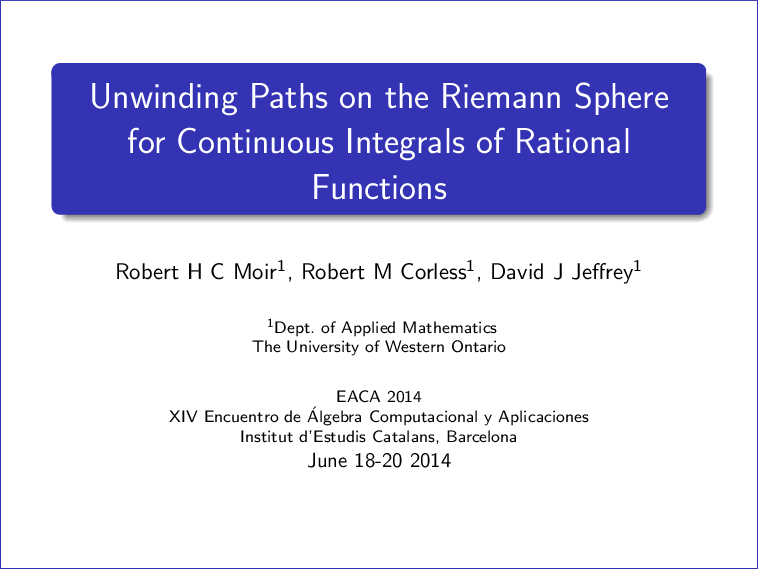
My most recent talk was on the use of a pair of unwinding numbers in order to obtain continuous expressions of symbolic integrals of rational functions of a real variable. This works by unwinding paths of integration that though they explicitly traverse the real line, they may implicitly cross branch cuts or go to infinity.
Consider an integral of the form
\[ \int_a^x\frac{p(t)}{q(t)}dt=g(x), \]
where \(p(x)\) and \(q(x)\) are real ordinary or trigonometric polynomials and \(g(x)\) is some rational (ordinary or trigonometric) function of \(x\) plus a sum of logarithms. Provided that \(q(x)\) has no real zeros, the integrand is continuous and bounded on the entire real line and so \(g(x)\) is also. In fairly generic cases, however, the expression for \(g(x)\) returned by some computer algebra systems, such as Maple, is discontinuous because the argument becomes singular.
We show that with an unwinding number \(\mathcal{K}_{\theta}\) that counts logarithmic branch crossings and another unwinding number \(\mathcal{K}_{r}\) that counts odd order pole passes through infinity on the Riemann sphere, the expression can be made continuous in a conceptually clear and computationally inexpensive way.
